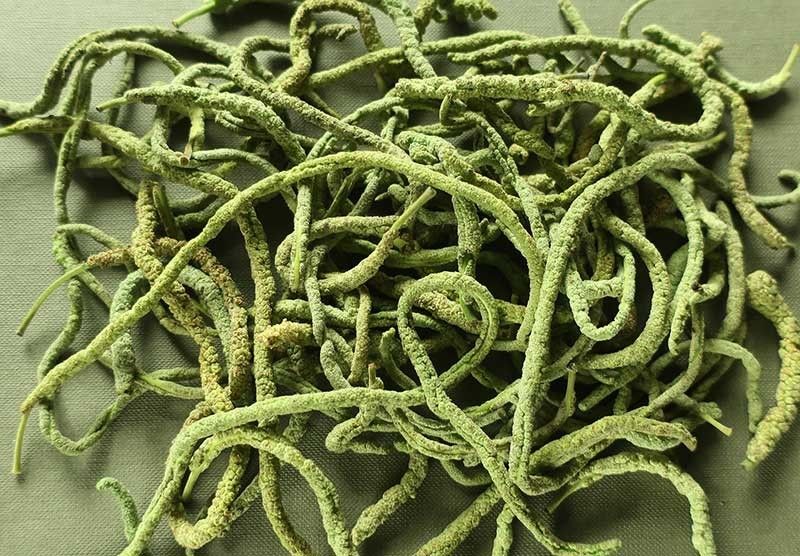
MANILA, Philippines — Have you ever encountered Himbabao, also known as Alukon, in any local vegetable dish that you have been served with?
Answering to the scientific name Broussonetia luzonica, the Himbabao tree can grow to a height of 15 meters, and this indigenous tree actually grows all around the Philippines but is utilized only in some parts of Luzon.
It bears female and male flowers on separate trees, and it is the male flowers which are prized for food purposes. These are known as catkins (long, slender and spike-like flowers), and they hang straight down the tree branches. Their length differs, so when they are prepped for food, the really long ones are cut into shorter lengths.
When I was a kid, I loved Himbabao in Ginisang Munggo. Our manang at home was an Ilocano, hailing from Tayug, Pangasinan, where my maternal grandparents settled, and Ginisang Munggo was part of her regular menu. She knew how I loved Himbabao in munggo, so every time she cooked munggo with Himbabao, she would tell me beforehand and I would get the first taste.
Ilocanos call it Baeg. Elsewhere, it also goes by the vernacular names Alibabag, Ambabaay, Aplit, Babayan, Bulaloy, Bungon and Kama-a. Internationally, it is known as Birch flower.
Not readily available even in wet markets, Himbabao is sold in grams and hardly in kilos. Its flowering season is from February to April. Loved by Ilocanos, it goes into vegetable dishes such as Dinengdeng, Inabraw and Pinakbet.

*****
Credit belongs to : www.philstar.com
 MaharlikaNews | Canada Leading Online Filipino Newspaper Portal The No. 1 most engaged information website for Filipino – Canadian in Canada. MaharlikaNews.com received almost a quarter a million visitors in 2020.
MaharlikaNews | Canada Leading Online Filipino Newspaper Portal The No. 1 most engaged information website for Filipino – Canadian in Canada. MaharlikaNews.com received almost a quarter a million visitors in 2020.
